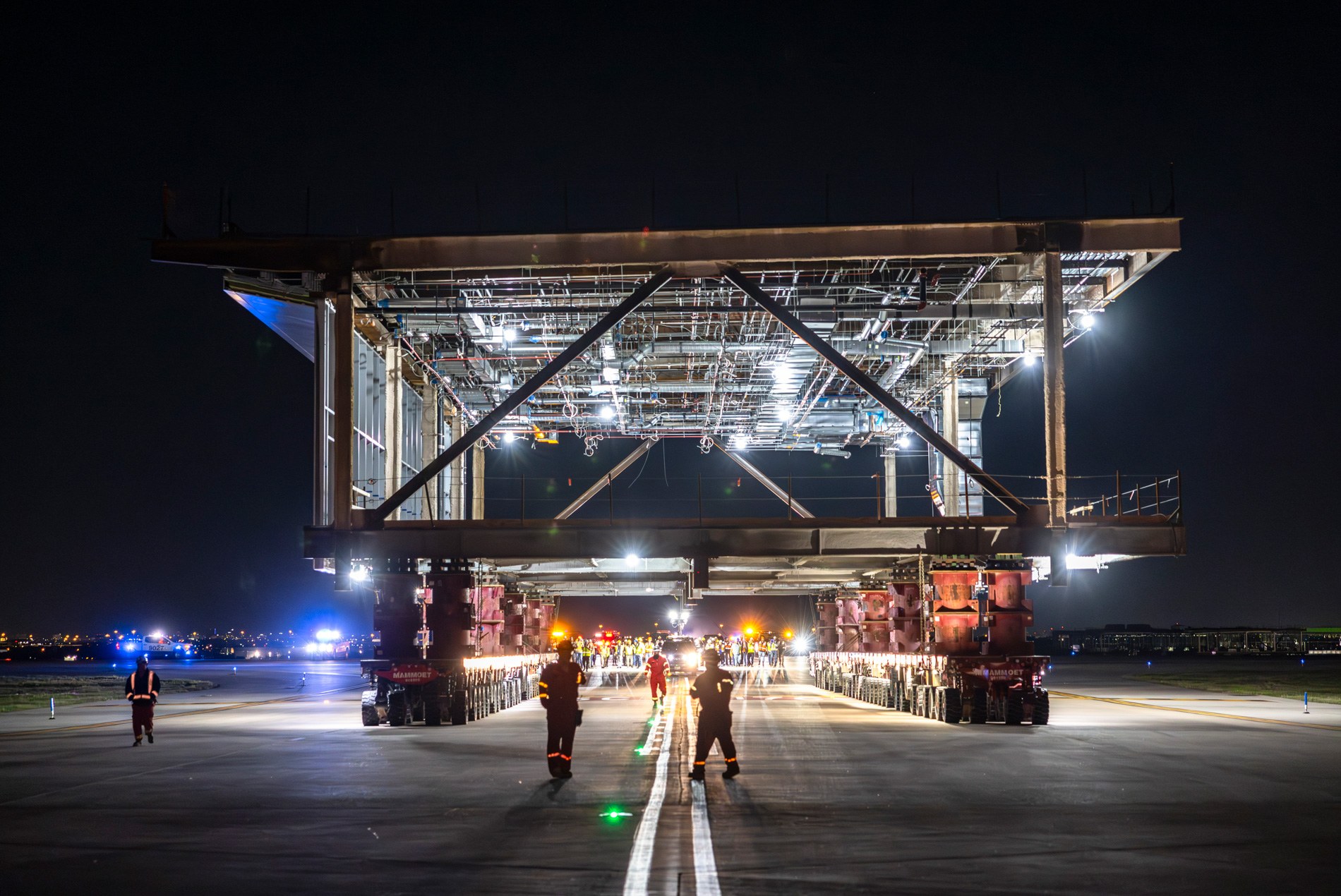Featuring HOK structural engineering leaders Matt Breidenthal and Rich Saunders, the article explores how modular construction is transforming Dallas Fort Worth International Airport, one of the world’s busiest airports.
With global air travel demand surging, airports must add gates without grounding flights. Breidenthal and Saunders share how HOK is using off-site fabrication and transporters capable of moving 1,200+ ton building modules to deliver new concourses for DFW’s Terminals A and C—all without closing any gates or delaying flights.

Image courtesy of Dallas Fort Worth International Airport
Excerpted from Fast Company:
“A decade ago, a major airport expansion project would have required closing runways, as traditional stick-built construction required erecting buildings directly on-site and turning operational gates into construction zones. But HOK suggested fabricating the structures at a nearby greenfield location, then transporting them into place overnight, during low-traffic hours.”
“‘Airports have high operational costs, and that is what modular construction offsets,’ says Richard Saunders, engineering practice leader for HOK’s Atlanta studio. He estimates that the operational impacts are roughly cut in half.”
“DFW was one of the first major airports to pioneer modular construction for terminal expansions back in 2022, when six prefabricated modules formed part of a new 80,000-square-foot concourse at Terminal C. The largest module then weighed 550 tons. This May, the airport set a new record, wheeling in modules twice as heavy.”
“At DFW, each move took place over six nights, spaced two nights apart to allow for contingencies. Each operation began around 9 p.m. and wrapped up by 3 or 4 a.m., just as runways reopened to daytime flights. HOK built the new modules just outside the airport’s security perimeter, which helped accelerate construction and inspection processes.”
“Moving a 1,200-ton building across a taxiway was made possible by Mammoet, a specialist in heavy transport. In 1985, Mammoet invented the self-propelled modular transporter (SPMT), a platform on wheels that can carry enormous loads by driving underneath heavy modules, then lifting them using hydraulics.”
“A spokesperson from Mammoet explained that while SPMTs aren’t new, the combination with its ’Mega Jack’ system is a recent innovation. The technology, which was first introduced in Atlanta, allows heavy modules to be lifted to nearly any height and directly onto foundations—rather than just a few feet off the ground. The DFW operation required an “army” of SPMTs, all coordinated by a single operator using a sophisticated remote control system that Breidenthal jokingly called a ‘glorified Game Boy.’”
“Once wheeled into position, the modules were ‘parked’ adjacent to the terminal, where a precise operation aligned them perfectly before lowering them onto pre-built foundations. After all modules were in place, the team completed the structure by ‘stitching’ them together with concrete.”
Read the full Fast Company article.


